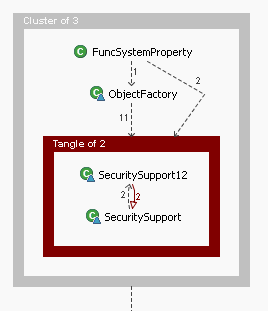Sometimes dependency graphs can be large and complex and difficult to understand. In these cases you can use the auto-partition feature ![]() . This analyzes the graph and partitions it according to the dependency structure. The resulting partitions are indicated as groupings on the dependency diagram or matrix.
. This analyzes the graph and partitions it according to the dependency structure. The resulting partitions are indicated as groupings on the dependency diagram or matrix.
Unless the original graph is quite simple (and therefore does not require partitioning), 2 types of partitions may be created - Tangles and Clusters .
Tangles are indicated as follows:
-
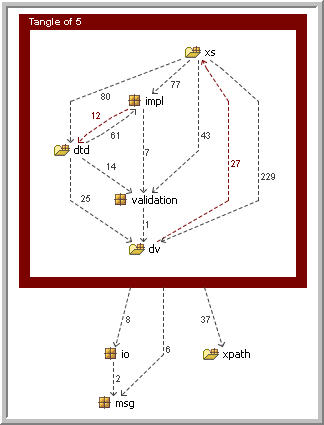
- A tangle in a dependency diagram
-
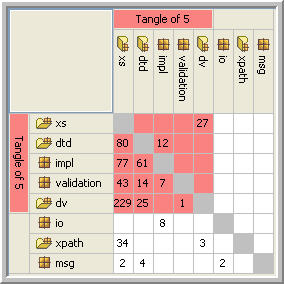
- Same tangle in a dependency matrix
Tangles are (generally undesirable) groups of nodes that are all directly or indirectly dependent on each other due to cyclic dependencies. If the "highlight feedback edges" option is selected, then the dependencies in the minimum feedback set will be drawn in red. If all of these dependencies were removed, then the tangle would go away.
With the tangles treated as single nodes, the rest of the graph is acyclic.
Clusters are indicated by gray borders.
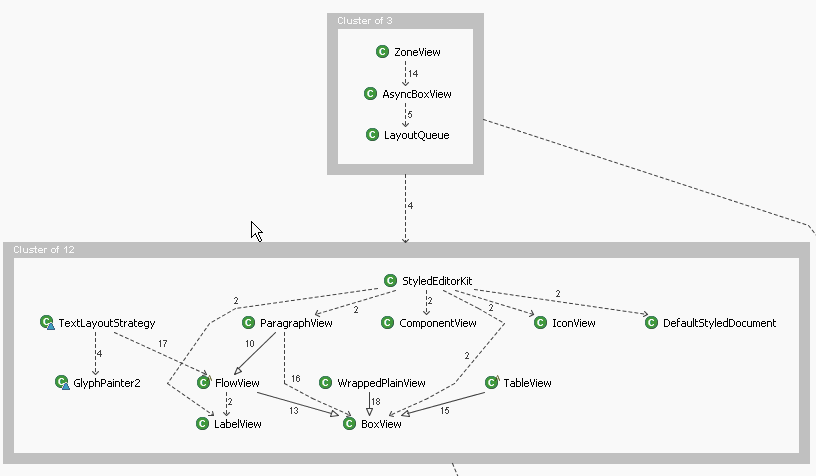
Structure101 Studio reduces the complexity of the graph by grouping nodes that are close to each other in the dependency graph and then showing the dependencies between the Clusters. In this way, you can still see the overall flow of dependencies in the graph, but with less detail. For example, if an item I uses 10 items in a cluster C, then the 10 edges in the un-partitioned graph are replaced by a single edge from I to C.
You can still discover which nodes in a Tangle or Cluster are used by an item by selecting the item (or dependency) of interest. The items not connected to the selected item are grayed out.
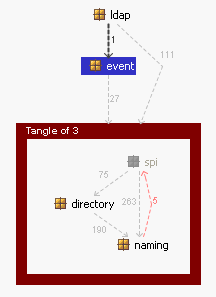
Note that it is possible for a Tangle to end up inside a Cluster (though not in a matrix view).
